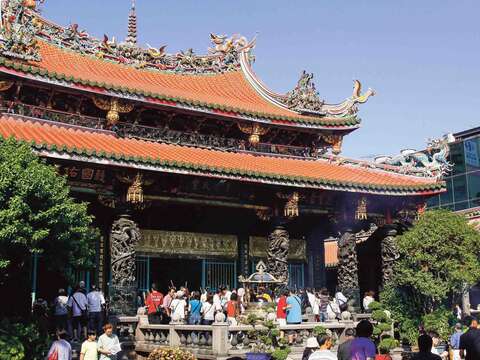Post date:2016-06-17
Updates:2016-08-23
1641
Article: Chung Wen-Ping
Photos: Jilin Yang
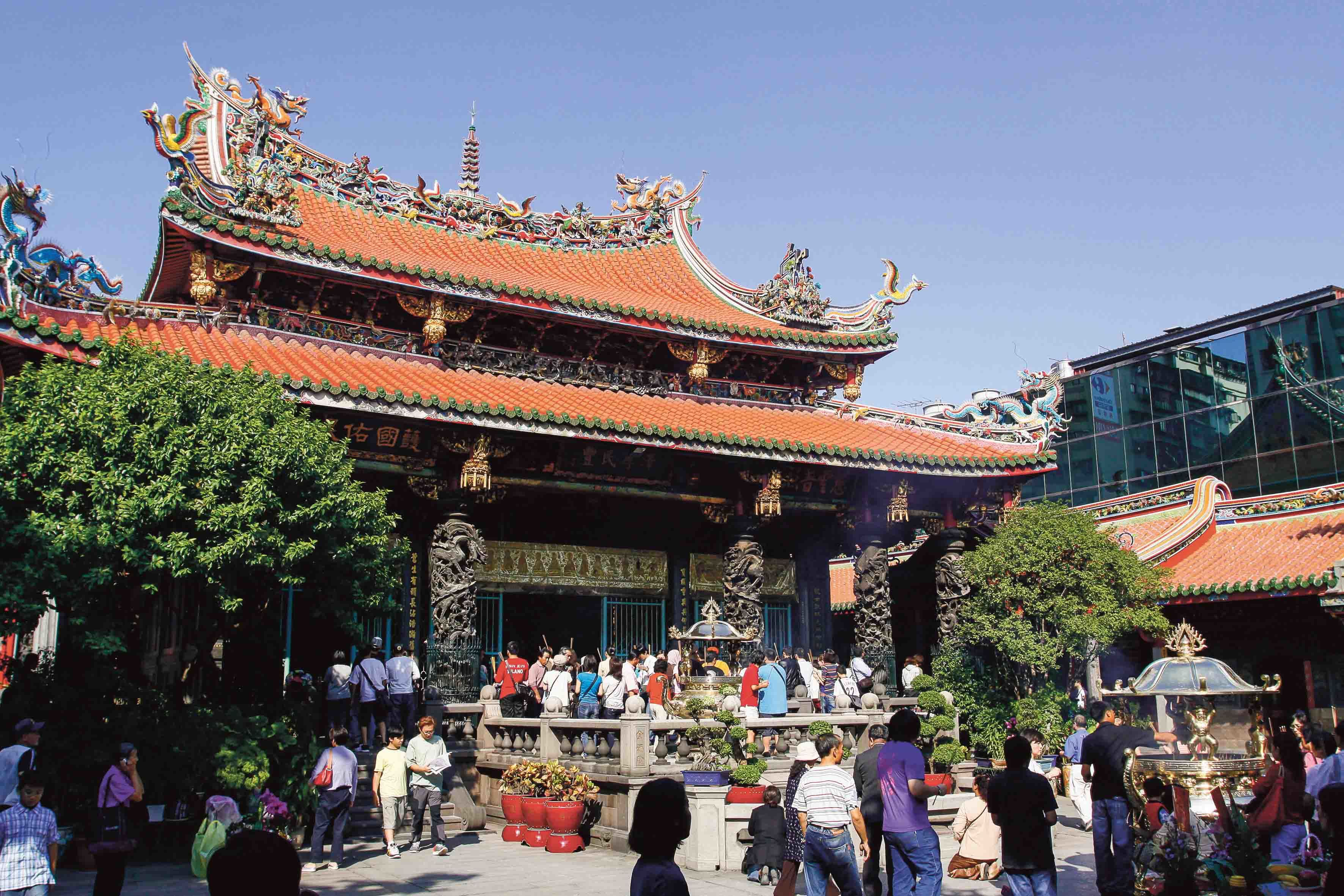
The Longshan Temple is not only the first large temple to be built in Bangka, but is also an exceedingly famous tourist destination. (Photo: Jilin Yang)
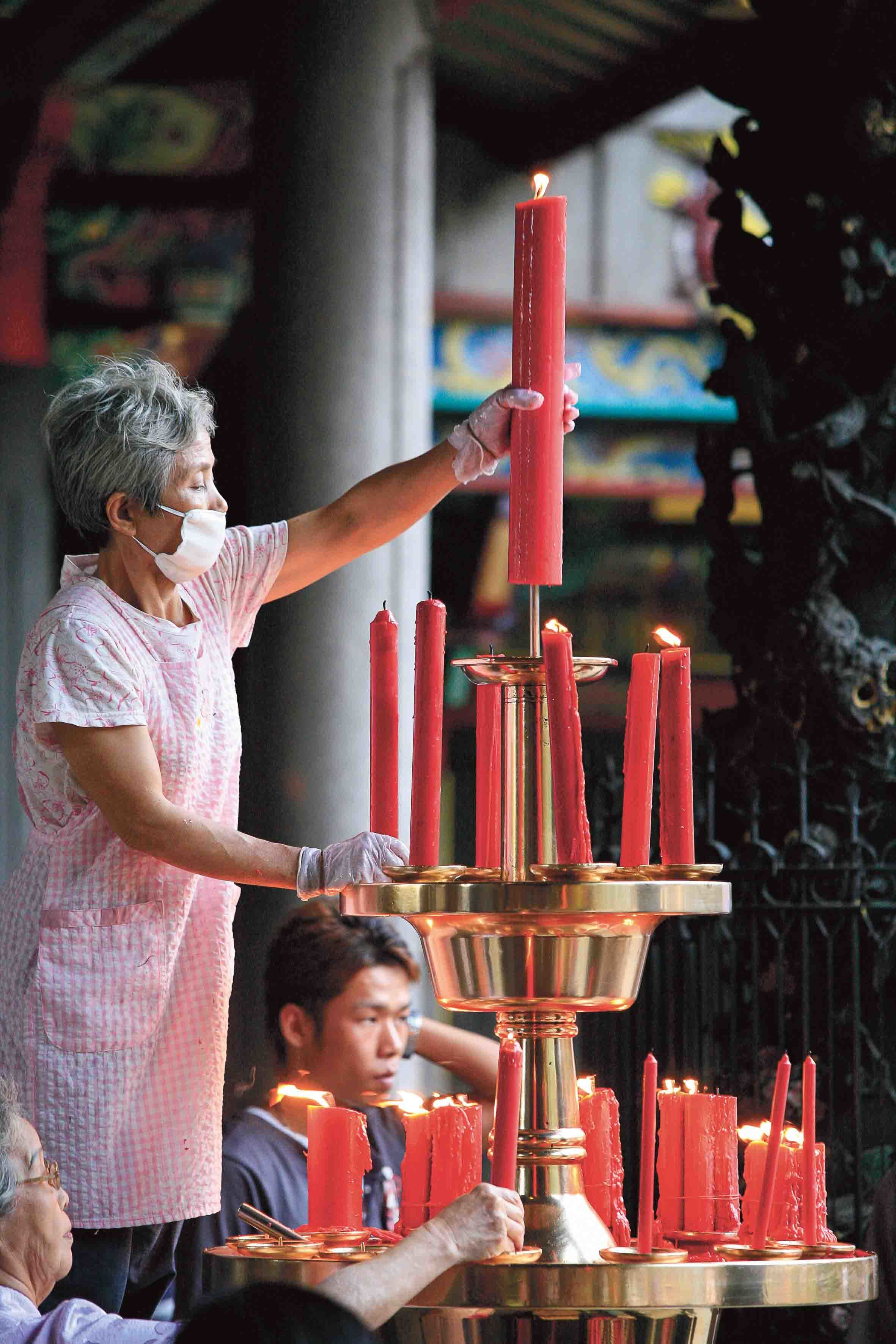
For more than 270 years, the crowds of people burning incense at “Taipei's first famous temple,” the Longshan Temple, have not waned. (Photo: Jilin Yang)
What are some of the historical sites associated with Bangka? Longshan Temple, Herb Alley, Bopiliao, and the food stalls in Xinfu Market (新富市場) are some examples. Bangka is the former name of Wanhua, and due to its favorable position near the mouth of the Tamsui River, it was the third largest city in Taiwan during the Qing Dynasty (清代), following Tainan and Lukang. It was also the starting point for the development of Taipei. Today, it is a place where traces remain of its former glamour and glory, such as ancient temples, streets, markets, and shops. Its many historical and cultural features, which have existed for hundreds of years, make it easy to spend a whole day here.
Bangka Historical Tour
Longshan Temple → Herb Alley → Xinfu Market (Grandma’s Sticky Rice〔阿婆油飯〕, 36 Tangyuan Shop〔三六圓仔店〕,and Sanshui Foods〔三水食品行〕) → Bopiliao Historic Block (剝皮寮歷史街區) → TaiHo Traditional Biscuit (太和餅舖) →Bangka Fortified Gate (艋舺隘門遺址) and Taipei Jen-Chi Hospital (台北仁濟院).
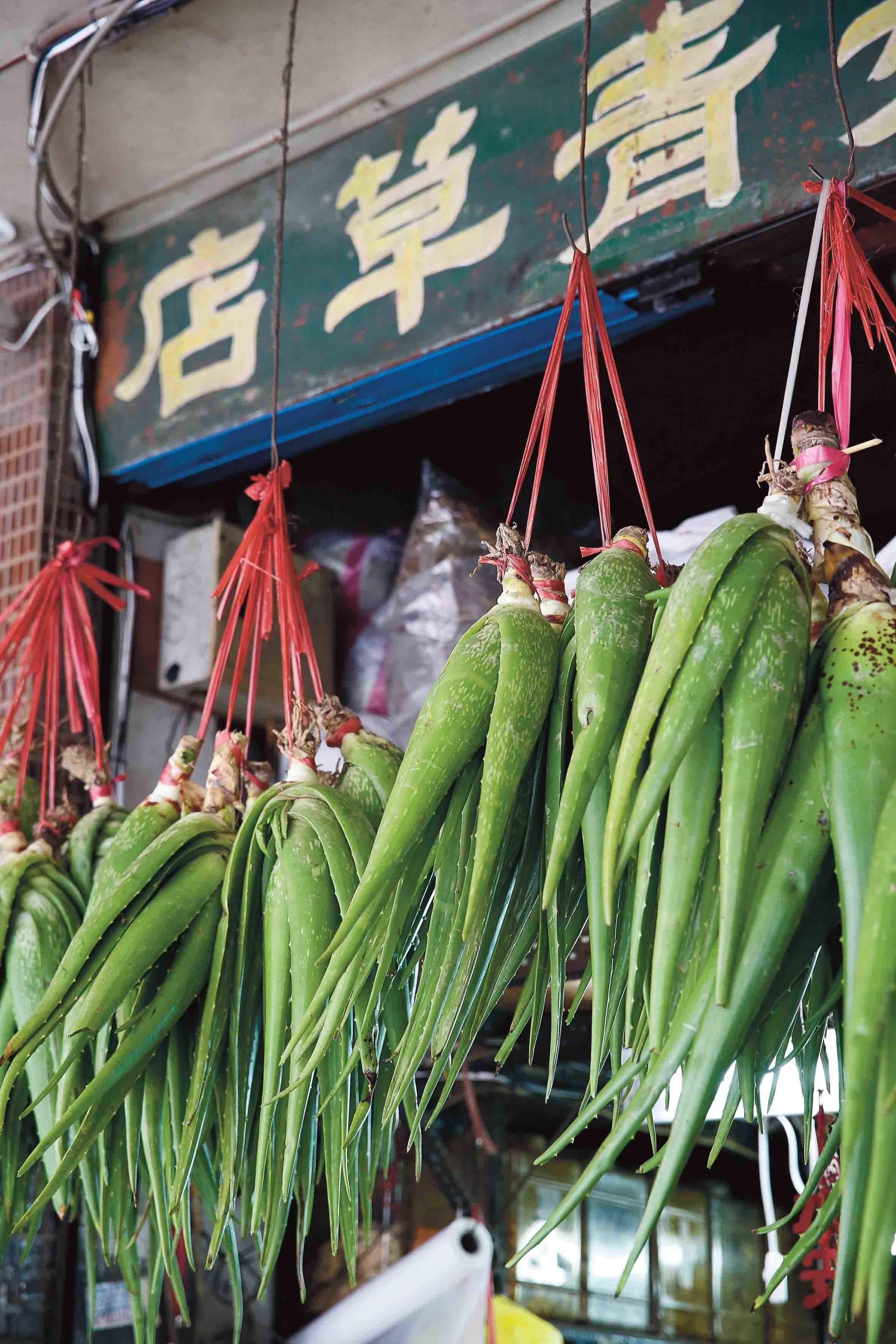
In recent years, concerns over food safety have once again brought attention to medicinal herbs as nourishing food. (Photo: Jilin Yang)
Longshan Temple – Taipei’s Most Famous Pilgrimage Spot
Longshan Temple is Bangka’s largest temple and a prestigious Taipei City tourist attraction. It was founded in 1738 as an important place for the people of Bangka to gather to pray for blessings and to ask the gods for help in resolving various matters. This was even where local conflicts occurred. From the perspectives of culture and history, the Longshan Temple is located in Taipei’s earliest settlement, and its long history epitomizes the development of Taipei City. From the perspective of architecture, the Longshan Temple faces south, and its exterior is in the style of an ancient Chinese palace with careful construction, exquisite carvings, and resplendent and beautiful temple appearance, which makes it second to none in Taipei.
Buttressed by its 270-year history, during which the saying “first Tainan, second Lukang, third Bangka” came into being and its status as “Taipei’s Number One Temple” the Longshan Temple remains a highly popular destination. Upon walking through the main gate, visitors can view upwardly curving eaves, detailed carvings, and the burning of incense for worship. These have remained completely unchanged. The only difference now is that there are more and more generations and higher numbers of worshippers and even foreigners who come to visit. A local tour guide Kao Chuan-chi laughingly refers to Longshan Temple as a place with divine powers that reach far and wide. Regardless of whether you are seeking wealth, fertility, health, or marriage, there is a temple chamber with a god to give you support. The Longshan Temple is among its devotees a spiritual “general hospital” in which every request for assistance must have a response.
Herb Alley – Rustic Fragrances
Outside Longshan Temple is a narrow 45 meter-long lane with an ancient market left over from the Qing Dynasty era. After worshippers in Longshan Temple requested an herb swab and drew a fortune divination stick, they would buy herbs from the vendors outside the temple. Over time, these vendors formed an herb alley that locals refer to as “Life-Saving Lane.” As swabs were later abolished and Western medicine became more prominent, Herb Alley gradually shrunk. In this lane, dark green plants and herbs can still be seen which holds deep appeal for cultural tourists. Author Lung Ying-Tai (龍應台) once said that it is “rustic but fragrant.” In this alley, faint sunlight refracts through translucent roofs and the entire space is ventilated by a cool breeze. This is a uniquely designed environment which keeps the herbs fresh, so that they do not easily dry out or rot. In addition to buying herbs to treat ailments, modern people pay attention to food therapy, cosmetic products, and refreshing beverages for cooling off, and each shop has its own special formulas. In recent years food safety incidents have made people feel ill at ease, and tonic herbs are receiving serious attention. Therefore, tonic herbs such as qingcao (青草) will not wither, and the old alley will continue to be praised by both tourists who are attracted by its reputation and loyal local customers as the fragrances waft through the air.
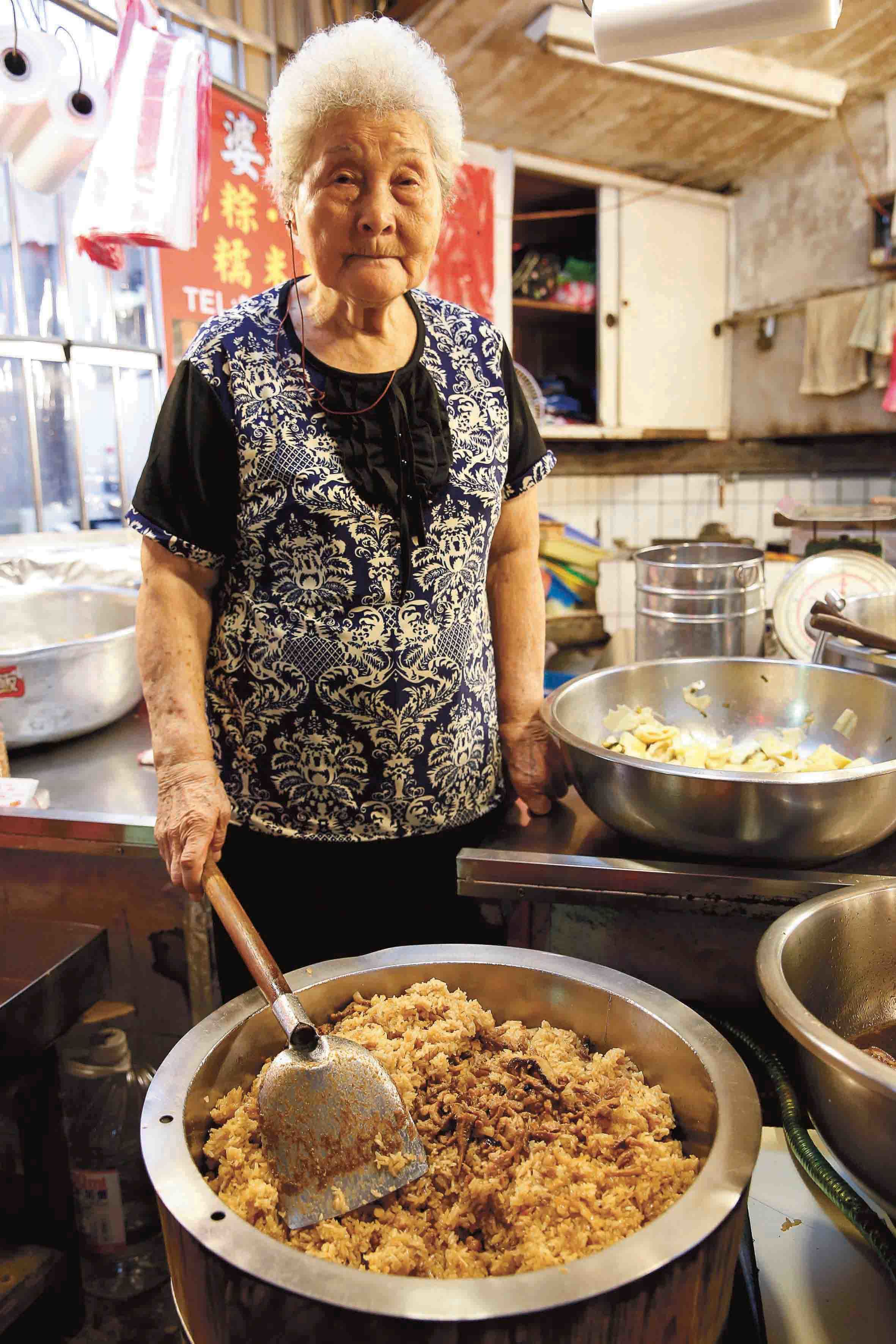
Grandma's Sticky Rice located in the Xinfu Market has won the title of "World's Best Vendor" from the city government over the past several years. (Photo: Jilin Yang)
Eating and Drinking Well in Xinfu Market
Although traditional markets do not close until the early afternoon, if you want to buy “Grandma’s Sticky Rice” it is best to arrive early. Eighty years ago, Xinfu Market was the first public market with regulated sanitation standards and modern architecture. With flawless planning, triangular windows, and a strategic location, Grandma’s Sticky Rice has won “The World’s Best Vendor” (天下第一攤) title over the past few years. After the sticky rice is soaked in water for three hours it is cooked over a large fire. Meanwhile, in a large iron pot, mushrooms, shredded streaky pork (五花肉), small dried shrimp, fried onions, and soy sauce are stir fried together. After the sticky rice is completely cooked, it is added to the mixture and stirred so that each grain becomes dark reddish brown. To add flavor, it is kept warm in a bamboo steamer. The result is a delectable sticky texture. Grandma also has another unique skill, which is the pouring of sticky rice into a washed pig intestines to make sticky rice sausages. The thin and crispy pig intestines give a multilayered texture, which makes this a highly sought after delicacy.
The periphery of the market is also crowded with old shops.“36 Tang yuan Shop” specializes in steamed taro cakes (芋粿巧), red tortoise cakes (紅龜粿), and fong-pen rice cakes (鳳片糕), which are used as food offerings by worshippers. This shop is often filled with tourists and has also begun selling tangyuan (湯圓) and shaved ice. The tang yuan is made with sticky rice grown near the Zhuoshui River (濁水溪) according to traditional methods. Sticky and chewy rice, sweet soup, and shaved ice are the shop’s signature ingredients.
Sanshui Foods is one of the rare traditional shops in the city that retains the practice of stir frying fresh peanuts and hand pressing sesame oil. For the stir-fried (油炒花生) and five spice peanuts (五香花生), they use large peanuts that are round and full. They also sell now seldom-seen peanut egg crisps (蛋酥花生), which are super crunchy and mouth watering. People eat one after another unable to stop themselves!
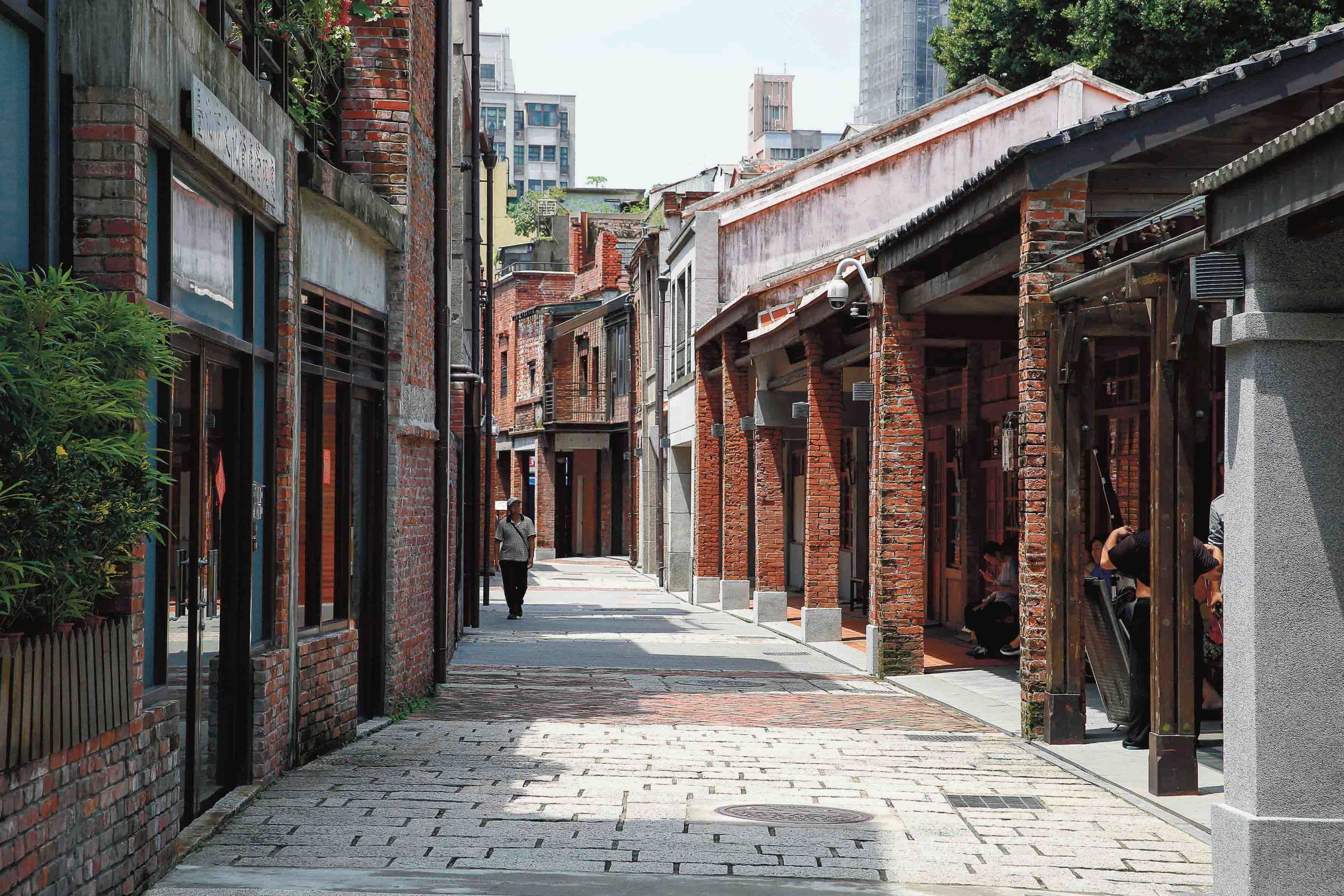
A stroll through the Bopiliao Historic Block is like going back in time to the glory days of old Bangka. (Photo: Jilin Yang)
Bopiliao Historic Block – Strolling Through Old Style Bangka
The origin of the name Bopiliao is related to a legend of the debarking of trees or the obtaining of animal skins. It took shape during the Qing Dynasty approximately 200 years ago. It is not on just one street but rather a compound formed around Guangzhou Street, Kangding Road, and Kunming Street Preserving Qing Dynasty street scenes, traditional accommodation from the early years of the Republic, elegant facades characteristic of the Japanese era, and modifications from post-Retrocession reconstruction, it is like a miniature composition of Bangka’s history. Owing to its location as an important transportation hub, many celebrities set up their residences and shops here. These included the home of Dr. Lu A-chang (呂阿昌醫生), the vacation home of Zhang Taiyan (章太炎), the Taiyang Book Binding Factory (太陽製本所), the Xiuying Teahouse (秀英茶室), and the Rixiang Hotel (日祥旅社). Strolling around the old streets is like being in old downtown Bangka. Compared with the more famous Dihua Street although Bopiliao is not as grand, it is more completely preserved and thus worth a visit.
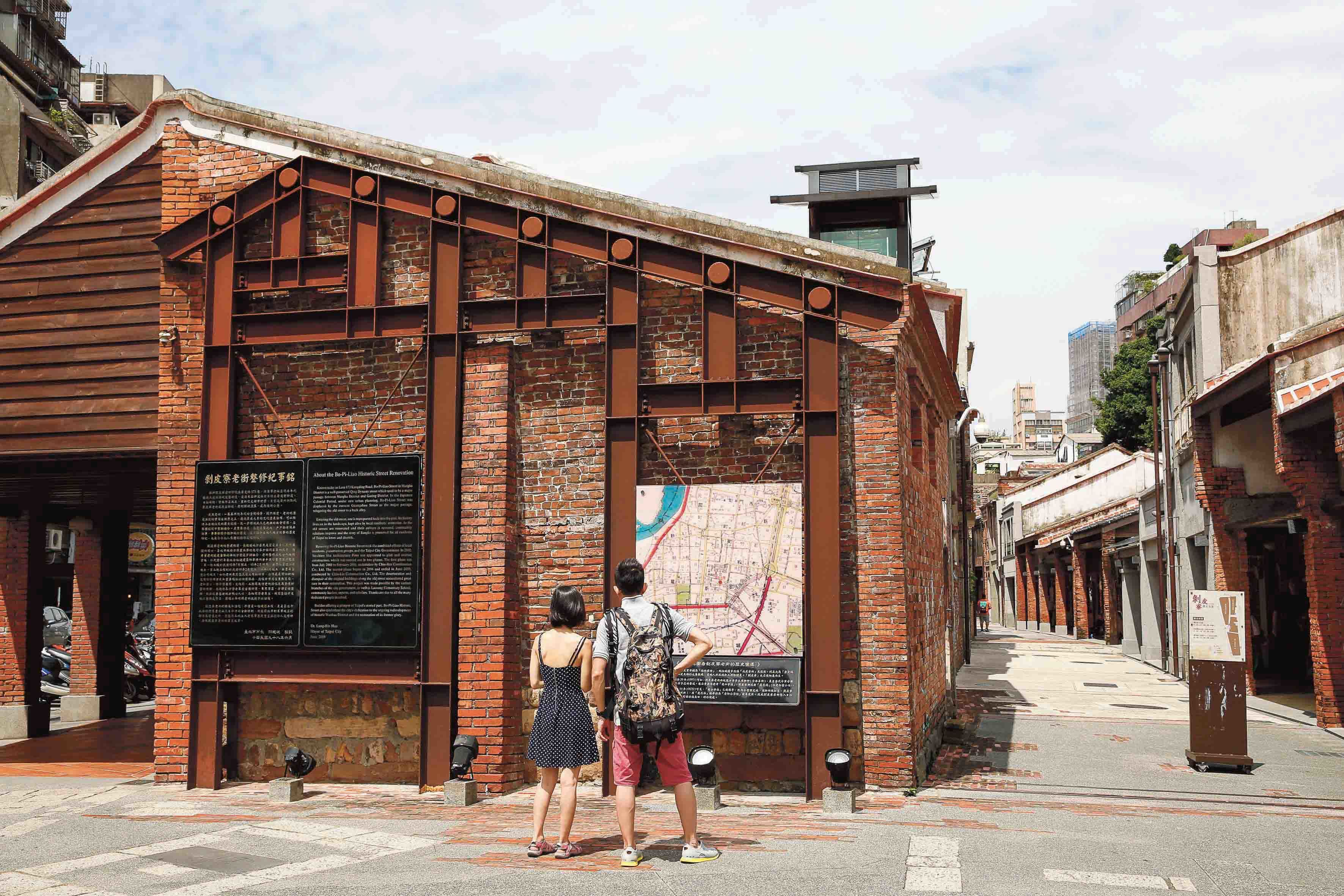
In Bopiliao is condensed the history of Bangka, making it well worth an in-depth exploration. (Photo: Jilin Yang)
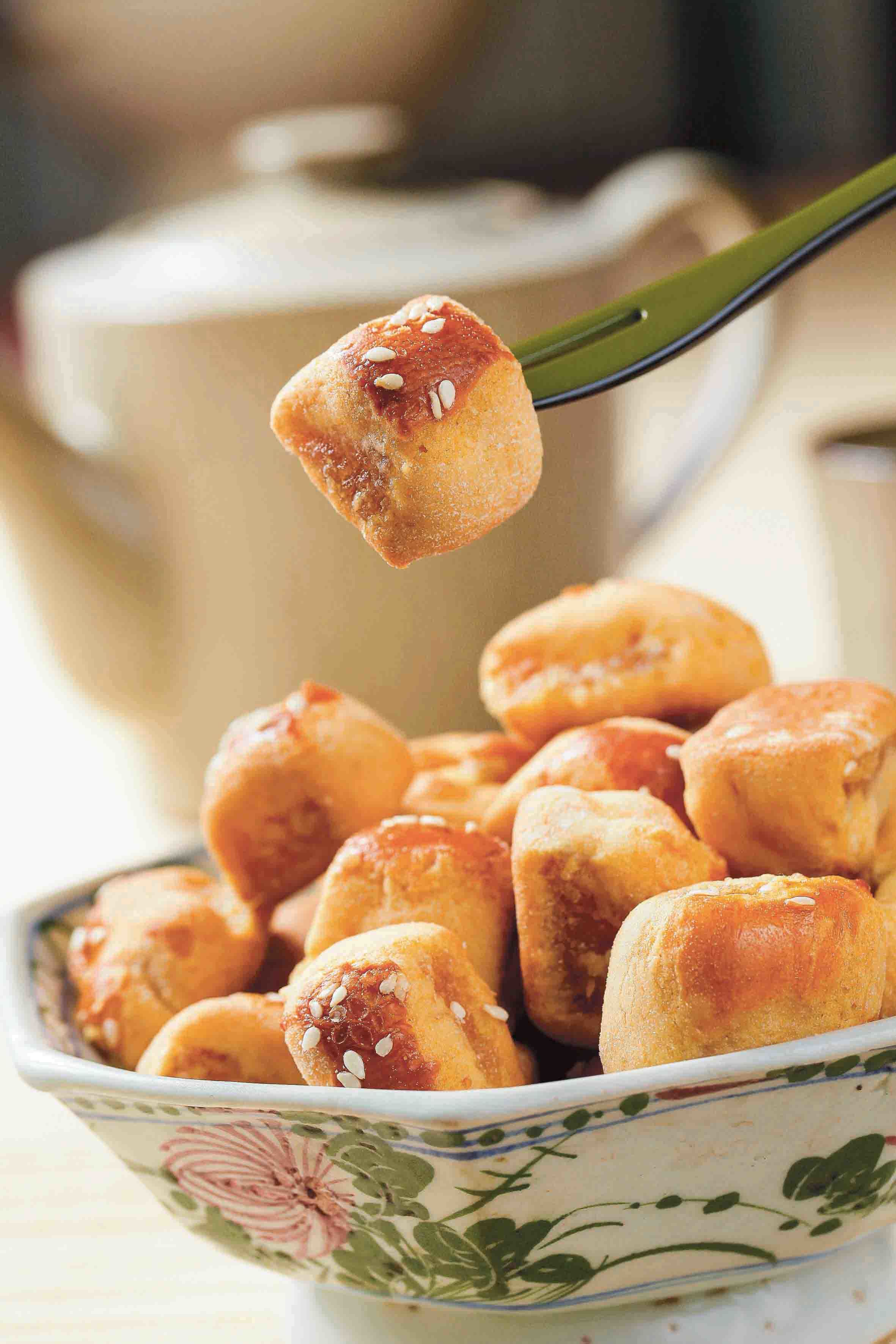
The pineapple balls have continued to be a popular product at TaiHo Traditional Biscuit from the time of its establishment until today. (Photo: Jilin Yang)
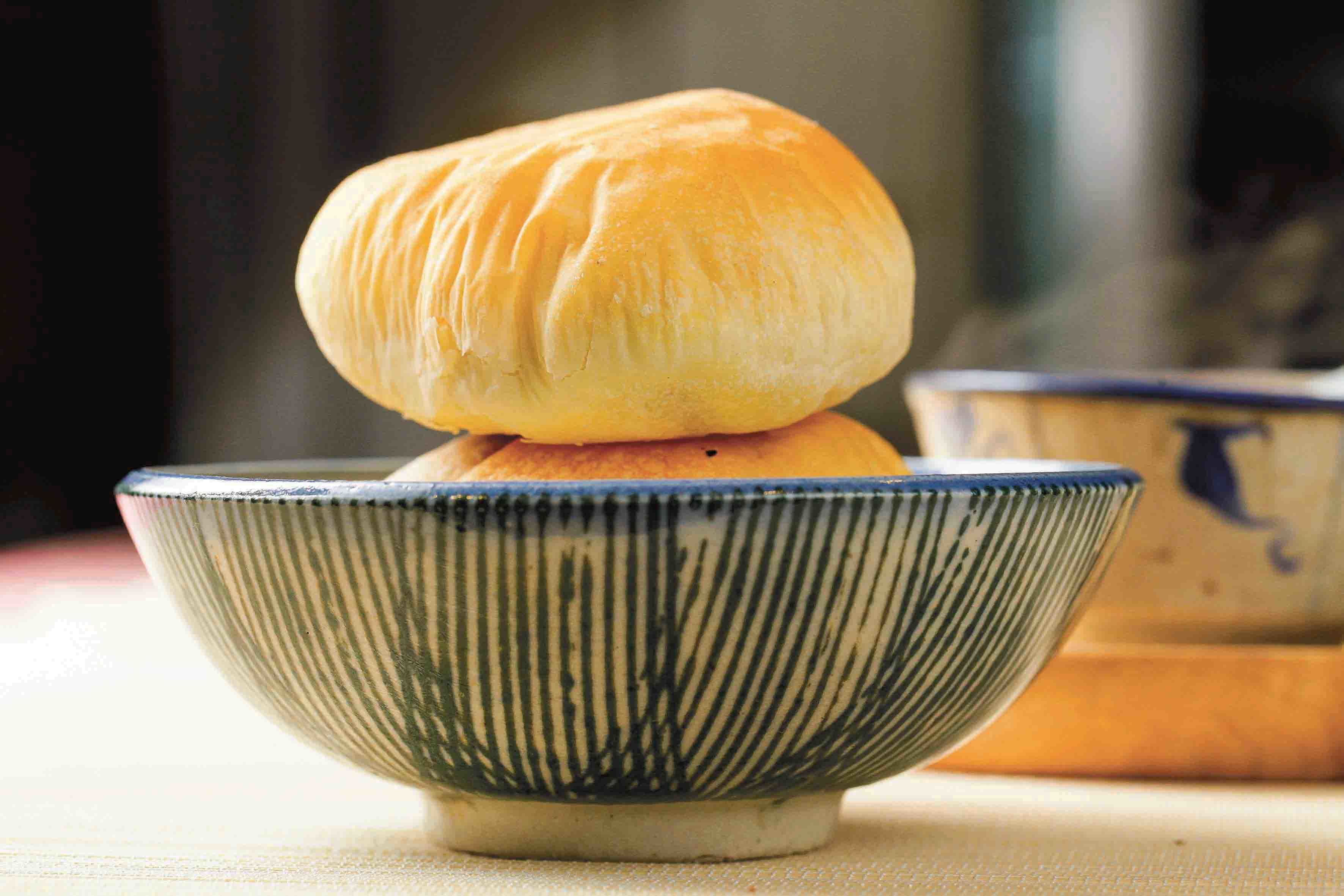
There are many ways to eat ponkan cake. This is one of the characteristic pastries sold at TaiHo Traditional Biscuit. (Photo: Jilin Yang)
TaiHo Traditional Biscuit – Tasting all Kinds of Cakes and Sweets
Founded in 1946, in the old Taiping Market (太平市場), it is a flashback to half a century ago. From its founding to the present, it has sold items such as ponkan cake (膨餅), pineapple balls, and old-fashioned meat pies. Of these snacks, the ponkan cakes are considered to be one of the most unique. They are placed inside a crushing bowl and then soaked in hot boiling water. However, they can be upgraded by steeping them in peanut or red bean soup to infuse them with more nutrients and a sweet and full flavor. In eras when supplies were scarce it was a luxury item used as worship offerings at Longshan Temple, breakfast, nighttime snack, and after childbirth.
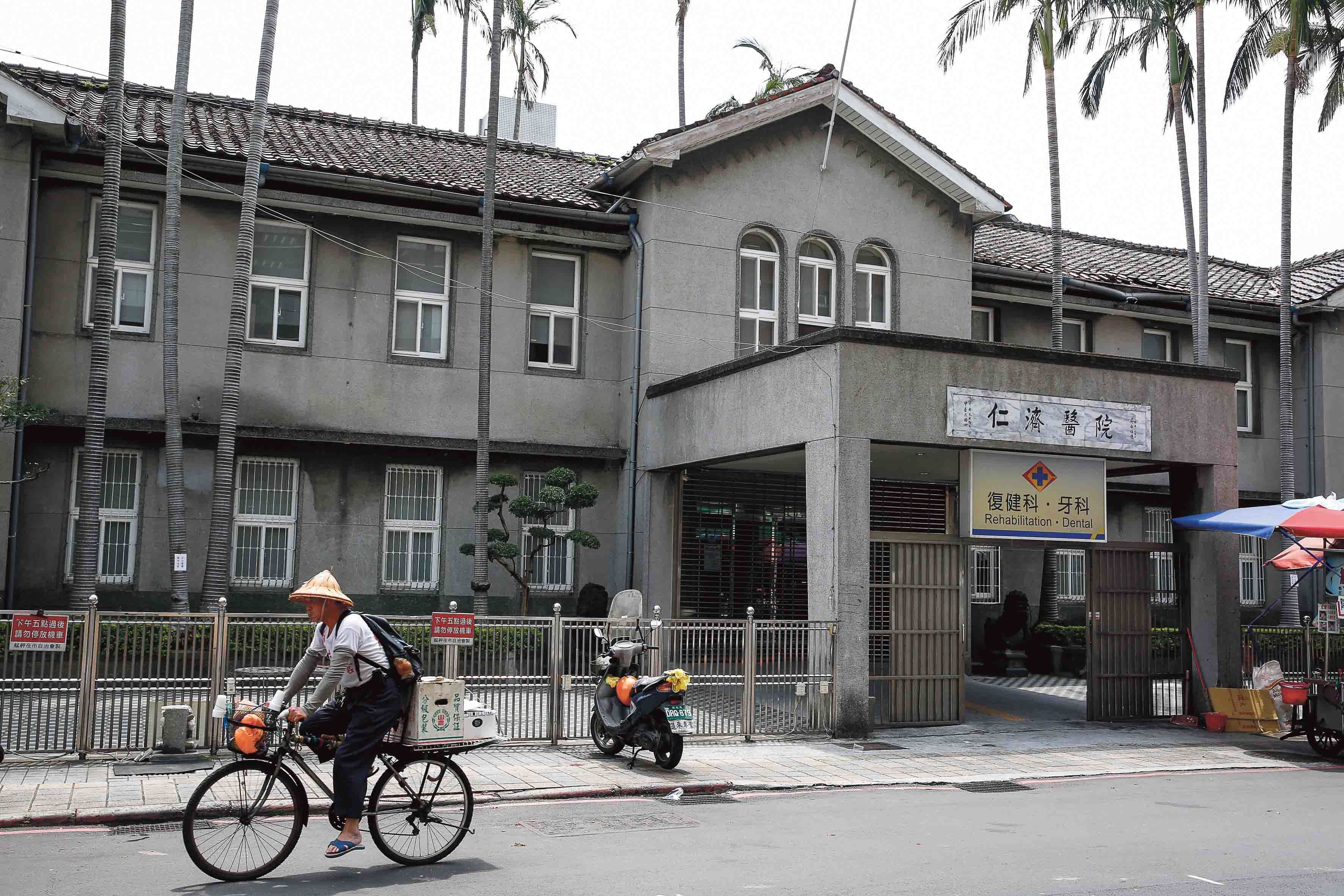
The Taipei Jen-Chi Hospital is a precious witness to the development of relief operations in Taipei City. (Photo: Jilin Yang)
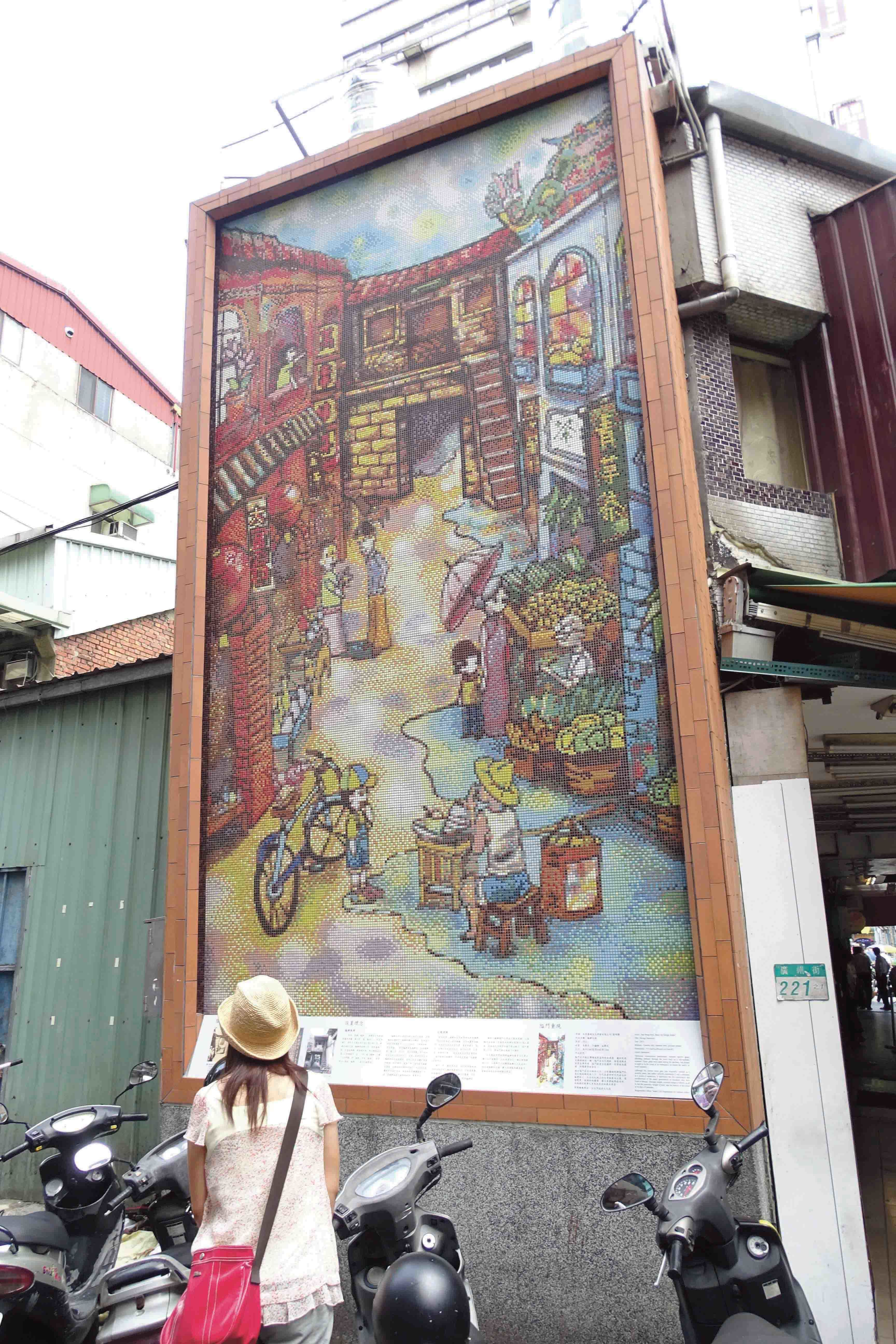
The two narrow gates from the early days of Bangka have been torn down, leaving behind only painted bricks. (Photo: Jilin Yang)
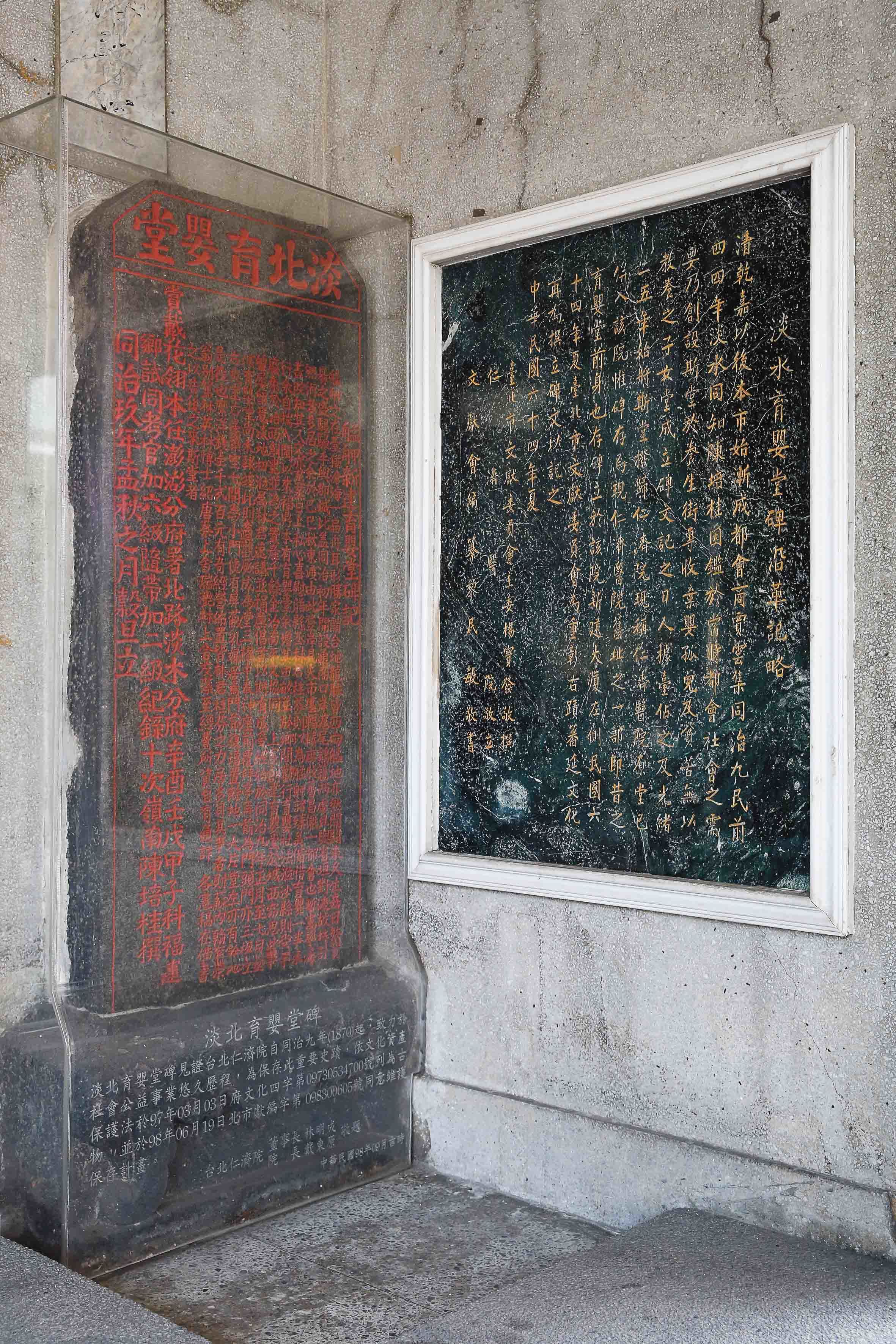
Next to the old entrance to today's Taipei Jen-Chi Hospital is one of the few remaining historical signs in Bangka. This was the original infant hospital sign. This hospital is a precious witness to the development of relief operations in Taipei City. (Photo: Jilin Yang)
Bangka Fortified Gate and Taipei Jen-Chi Hospital
In the movie Monga there were a lot of chase and fight scenes. Keen viewers may have noticed an inconspicuous narrow little gate, especially during these action sequences. Early on, in order to safeguard Bangka, at the meeting point of Guiyang Street and Xichang Street, and on Guangzhou Street Lane 223 two narrow gates were constructed. In the event of fights or intrusions by bandits, the gates could be closed as an immediate defense. Unfortunately, they were demolished many years ago, and all that remains are painted bricks.
People have feelings of regret about the disappearance of antiquities, and so near the narrow gates, the Taipei Jen-Chi Hospital remains as it was. In earlier times, boys were valued more than girls, and infant girls were sometimes drowned or abandoned. A fourth-generation elder of the Lin family from Banqiao (板橋林家), Lin Wei-yuan (林維源) established a child protection bureau in 1866 to rescue abandoned infant girls. In 1870, Chen Peigui (陳培桂) of Tamsui Prefect expanded assistance and made it into an infant hospital, while also establishing a rejuvenation hospital, a foster care center, and a charity hall. During the Japanese era these were combined into a relief asylum for abandoned infants, people with disabilities, and injured elderly. Similar to today’s orphanages and elderly care homes, it was a social welfare institution of considerable size at the time and a predecessor to the Taipei Jen-Chi Hospital. Today, this hospital is equipped with an exhibition gallery. Next to the entrance of today’s Jen-Chi Hospital is the remnants of the sign to the original infant hospital. It is not only the sole existing historical sign in Bangka, but also a precious witness to the development of relief operations in Taipei City.
Photos: Jilin Yang

The Longshan Temple is not only the first large temple to be built in Bangka, but is also an exceedingly famous tourist destination. (Photo: Jilin Yang)

For more than 270 years, the crowds of people burning incense at “Taipei's first famous temple,” the Longshan Temple, have not waned. (Photo: Jilin Yang)
What are some of the historical sites associated with Bangka? Longshan Temple, Herb Alley, Bopiliao, and the food stalls in Xinfu Market (新富市場) are some examples. Bangka is the former name of Wanhua, and due to its favorable position near the mouth of the Tamsui River, it was the third largest city in Taiwan during the Qing Dynasty (清代), following Tainan and Lukang. It was also the starting point for the development of Taipei. Today, it is a place where traces remain of its former glamour and glory, such as ancient temples, streets, markets, and shops. Its many historical and cultural features, which have existed for hundreds of years, make it easy to spend a whole day here.
Bangka Historical Tour
Longshan Temple → Herb Alley → Xinfu Market (Grandma’s Sticky Rice〔阿婆油飯〕, 36 Tangyuan Shop〔三六圓仔店〕,and Sanshui Foods〔三水食品行〕) → Bopiliao Historic Block (剝皮寮歷史街區) → TaiHo Traditional Biscuit (太和餅舖) →Bangka Fortified Gate (艋舺隘門遺址) and Taipei Jen-Chi Hospital (台北仁濟院).

In recent years, concerns over food safety have once again brought attention to medicinal herbs as nourishing food. (Photo: Jilin Yang)
Longshan Temple – Taipei’s Most Famous Pilgrimage Spot
Longshan Temple is Bangka’s largest temple and a prestigious Taipei City tourist attraction. It was founded in 1738 as an important place for the people of Bangka to gather to pray for blessings and to ask the gods for help in resolving various matters. This was even where local conflicts occurred. From the perspectives of culture and history, the Longshan Temple is located in Taipei’s earliest settlement, and its long history epitomizes the development of Taipei City. From the perspective of architecture, the Longshan Temple faces south, and its exterior is in the style of an ancient Chinese palace with careful construction, exquisite carvings, and resplendent and beautiful temple appearance, which makes it second to none in Taipei.
Buttressed by its 270-year history, during which the saying “first Tainan, second Lukang, third Bangka” came into being and its status as “Taipei’s Number One Temple” the Longshan Temple remains a highly popular destination. Upon walking through the main gate, visitors can view upwardly curving eaves, detailed carvings, and the burning of incense for worship. These have remained completely unchanged. The only difference now is that there are more and more generations and higher numbers of worshippers and even foreigners who come to visit. A local tour guide Kao Chuan-chi laughingly refers to Longshan Temple as a place with divine powers that reach far and wide. Regardless of whether you are seeking wealth, fertility, health, or marriage, there is a temple chamber with a god to give you support. The Longshan Temple is among its devotees a spiritual “general hospital” in which every request for assistance must have a response.
Herb Alley – Rustic Fragrances
Outside Longshan Temple is a narrow 45 meter-long lane with an ancient market left over from the Qing Dynasty era. After worshippers in Longshan Temple requested an herb swab and drew a fortune divination stick, they would buy herbs from the vendors outside the temple. Over time, these vendors formed an herb alley that locals refer to as “Life-Saving Lane.” As swabs were later abolished and Western medicine became more prominent, Herb Alley gradually shrunk. In this lane, dark green plants and herbs can still be seen which holds deep appeal for cultural tourists. Author Lung Ying-Tai (龍應台) once said that it is “rustic but fragrant.” In this alley, faint sunlight refracts through translucent roofs and the entire space is ventilated by a cool breeze. This is a uniquely designed environment which keeps the herbs fresh, so that they do not easily dry out or rot. In addition to buying herbs to treat ailments, modern people pay attention to food therapy, cosmetic products, and refreshing beverages for cooling off, and each shop has its own special formulas. In recent years food safety incidents have made people feel ill at ease, and tonic herbs are receiving serious attention. Therefore, tonic herbs such as qingcao (青草) will not wither, and the old alley will continue to be praised by both tourists who are attracted by its reputation and loyal local customers as the fragrances waft through the air.

Grandma's Sticky Rice located in the Xinfu Market has won the title of "World's Best Vendor" from the city government over the past several years. (Photo: Jilin Yang)
Eating and Drinking Well in Xinfu Market
Although traditional markets do not close until the early afternoon, if you want to buy “Grandma’s Sticky Rice” it is best to arrive early. Eighty years ago, Xinfu Market was the first public market with regulated sanitation standards and modern architecture. With flawless planning, triangular windows, and a strategic location, Grandma’s Sticky Rice has won “The World’s Best Vendor” (天下第一攤) title over the past few years. After the sticky rice is soaked in water for three hours it is cooked over a large fire. Meanwhile, in a large iron pot, mushrooms, shredded streaky pork (五花肉), small dried shrimp, fried onions, and soy sauce are stir fried together. After the sticky rice is completely cooked, it is added to the mixture and stirred so that each grain becomes dark reddish brown. To add flavor, it is kept warm in a bamboo steamer. The result is a delectable sticky texture. Grandma also has another unique skill, which is the pouring of sticky rice into a washed pig intestines to make sticky rice sausages. The thin and crispy pig intestines give a multilayered texture, which makes this a highly sought after delicacy.
The periphery of the market is also crowded with old shops.“36 Tang yuan Shop” specializes in steamed taro cakes (芋粿巧), red tortoise cakes (紅龜粿), and fong-pen rice cakes (鳳片糕), which are used as food offerings by worshippers. This shop is often filled with tourists and has also begun selling tangyuan (湯圓) and shaved ice. The tang yuan is made with sticky rice grown near the Zhuoshui River (濁水溪) according to traditional methods. Sticky and chewy rice, sweet soup, and shaved ice are the shop’s signature ingredients.
Sanshui Foods is one of the rare traditional shops in the city that retains the practice of stir frying fresh peanuts and hand pressing sesame oil. For the stir-fried (油炒花生) and five spice peanuts (五香花生), they use large peanuts that are round and full. They also sell now seldom-seen peanut egg crisps (蛋酥花生), which are super crunchy and mouth watering. People eat one after another unable to stop themselves!

A stroll through the Bopiliao Historic Block is like going back in time to the glory days of old Bangka. (Photo: Jilin Yang)
Bopiliao Historic Block – Strolling Through Old Style Bangka
The origin of the name Bopiliao is related to a legend of the debarking of trees or the obtaining of animal skins. It took shape during the Qing Dynasty approximately 200 years ago. It is not on just one street but rather a compound formed around Guangzhou Street, Kangding Road, and Kunming Street Preserving Qing Dynasty street scenes, traditional accommodation from the early years of the Republic, elegant facades characteristic of the Japanese era, and modifications from post-Retrocession reconstruction, it is like a miniature composition of Bangka’s history. Owing to its location as an important transportation hub, many celebrities set up their residences and shops here. These included the home of Dr. Lu A-chang (呂阿昌醫生), the vacation home of Zhang Taiyan (章太炎), the Taiyang Book Binding Factory (太陽製本所), the Xiuying Teahouse (秀英茶室), and the Rixiang Hotel (日祥旅社). Strolling around the old streets is like being in old downtown Bangka. Compared with the more famous Dihua Street although Bopiliao is not as grand, it is more completely preserved and thus worth a visit.

In Bopiliao is condensed the history of Bangka, making it well worth an in-depth exploration. (Photo: Jilin Yang)

The pineapple balls have continued to be a popular product at TaiHo Traditional Biscuit from the time of its establishment until today. (Photo: Jilin Yang)

There are many ways to eat ponkan cake. This is one of the characteristic pastries sold at TaiHo Traditional Biscuit. (Photo: Jilin Yang)
TaiHo Traditional Biscuit – Tasting all Kinds of Cakes and Sweets
Founded in 1946, in the old Taiping Market (太平市場), it is a flashback to half a century ago. From its founding to the present, it has sold items such as ponkan cake (膨餅), pineapple balls, and old-fashioned meat pies. Of these snacks, the ponkan cakes are considered to be one of the most unique. They are placed inside a crushing bowl and then soaked in hot boiling water. However, they can be upgraded by steeping them in peanut or red bean soup to infuse them with more nutrients and a sweet and full flavor. In eras when supplies were scarce it was a luxury item used as worship offerings at Longshan Temple, breakfast, nighttime snack, and after childbirth.

The Taipei Jen-Chi Hospital is a precious witness to the development of relief operations in Taipei City. (Photo: Jilin Yang)

The two narrow gates from the early days of Bangka have been torn down, leaving behind only painted bricks. (Photo: Jilin Yang)

Next to the old entrance to today's Taipei Jen-Chi Hospital is one of the few remaining historical signs in Bangka. This was the original infant hospital sign. This hospital is a precious witness to the development of relief operations in Taipei City. (Photo: Jilin Yang)
Bangka Fortified Gate and Taipei Jen-Chi Hospital
In the movie Monga there were a lot of chase and fight scenes. Keen viewers may have noticed an inconspicuous narrow little gate, especially during these action sequences. Early on, in order to safeguard Bangka, at the meeting point of Guiyang Street and Xichang Street, and on Guangzhou Street Lane 223 two narrow gates were constructed. In the event of fights or intrusions by bandits, the gates could be closed as an immediate defense. Unfortunately, they were demolished many years ago, and all that remains are painted bricks.
People have feelings of regret about the disappearance of antiquities, and so near the narrow gates, the Taipei Jen-Chi Hospital remains as it was. In earlier times, boys were valued more than girls, and infant girls were sometimes drowned or abandoned. A fourth-generation elder of the Lin family from Banqiao (板橋林家), Lin Wei-yuan (林維源) established a child protection bureau in 1866 to rescue abandoned infant girls. In 1870, Chen Peigui (陳培桂) of Tamsui Prefect expanded assistance and made it into an infant hospital, while also establishing a rejuvenation hospital, a foster care center, and a charity hall. During the Japanese era these were combined into a relief asylum for abandoned infants, people with disabilities, and injured elderly. Similar to today’s orphanages and elderly care homes, it was a social welfare institution of considerable size at the time and a predecessor to the Taipei Jen-Chi Hospital. Today, this hospital is equipped with an exhibition gallery. Next to the entrance of today’s Jen-Chi Hospital is the remnants of the sign to the original infant hospital. It is not only the sole existing historical sign in Bangka, but also a precious witness to the development of relief operations in Taipei City.
 TAIPEI 2015 Winter Vol.02—Bangka Old Town Yesterday and Today
TAIPEI 2015 Winter Vol.02—Bangka Old Town Yesterday and Today